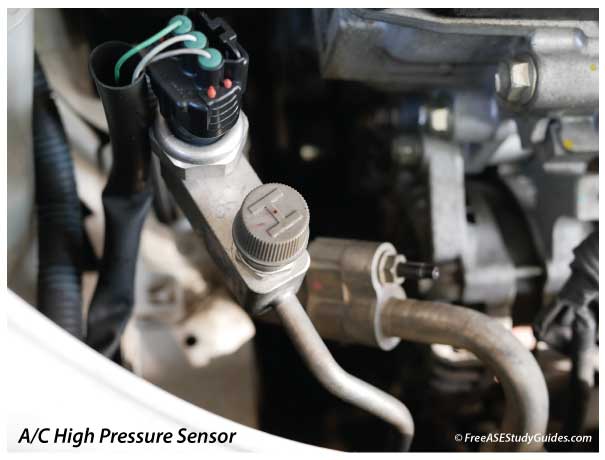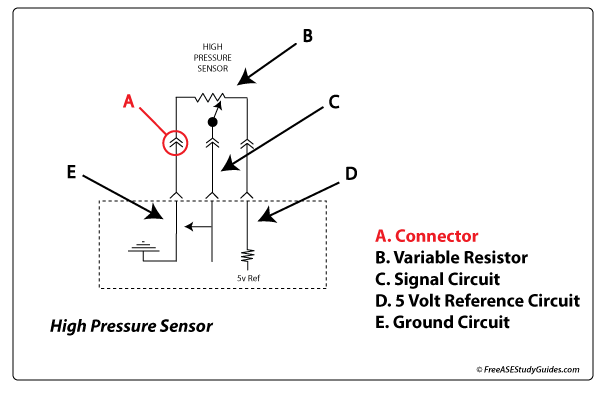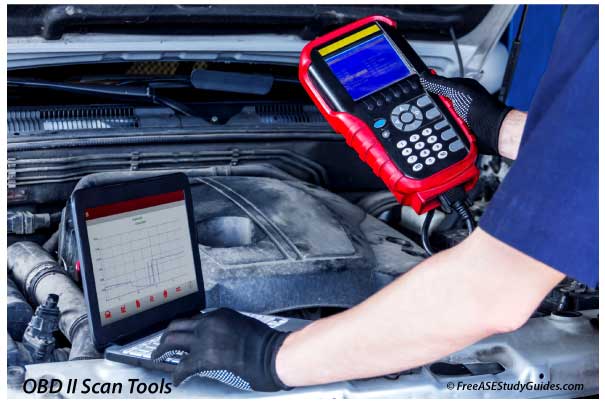A/C Pressure Sensors

Pressure sensors have three wires leading to the control module. The ECM could be the (ECC) Electronic Climate Control (PCM) Powertrain Control Module or the (BCM) Body Control Module.

They are sometimes called switches but differ from simple two-wire on/off pressure switches by providing a variable signal. Like many automotive sensors, pressure sensors contain three circuits: a 5-volt reference circuit, a signal circuit, and a ground circuit.

They are pressure transducers that convert refrigerant pressure to a variable voltage signal, somewhere between 0.1 V for low pressure (~0 psi) and 4.9 V for high pressure (~430 psi). On modern vehicles, these sensors monitor the system's high and low side pressures. Use an A/C manifold gauge set and scan tool to diagnose sensor function. Armed with the proper tool, a technician can monitor system refrigerant pressure without a manifold and gauge set.